Key takeaways:
- Analytics can significantly enhance understanding of audience engagement and inform future event planning.
- Key types of event analytics include behavioral, demographic, and sentiment analysis, all of which provide valuable insights into attendee preferences and experiences.
- Tools like Google Analytics and social media platforms allow for effective measurement of engagement and success, enabling real-time adjustments during events.
- The future of event analytics may involve AI and wearable technology, offering deeper insights into attendee behavior and preferences for creating more tailored experiences.
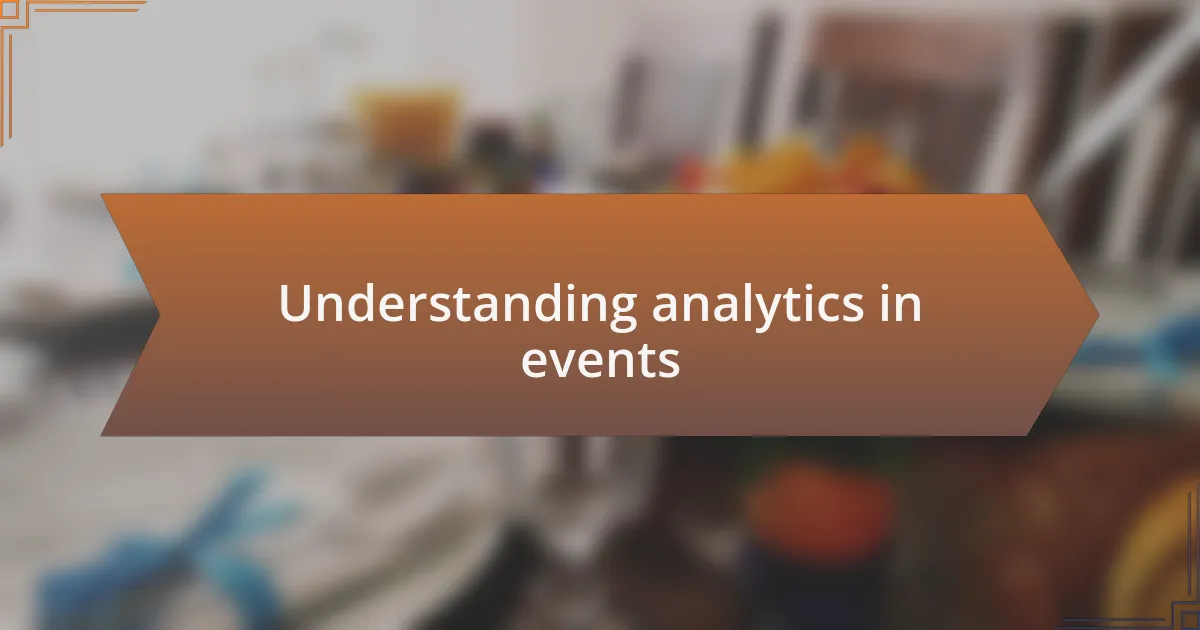
Understanding analytics in events
Analytics in events is an often-overlooked powerhouse that can transform how we understand audience engagement. I recall attending a conference where post-event analytics revealed that participants found value in specific sessions far more than others. It got me thinking: how many times do we proceed without really understanding what resonates with our audience?
When we dive deep into analytics, we unlock insights about attendee behavior, preferences, and even pain points. For example, monitoring social media engagement during an event can show us in real-time which topics are sparking conversations. Have you ever considered how adjusting your event content based on these immediate feedback loops could enhance future experiences?
Moreover, analyzing registration trends can illuminate demographic shifts that may impact our event planning. I once noticed a significant uptick in younger attendees for a tech summit I hosted, which prompted us to tailor our sessions to align more with their interests. Isn’t it fascinating how data can guide us to create more meaningful connections with our audiences?
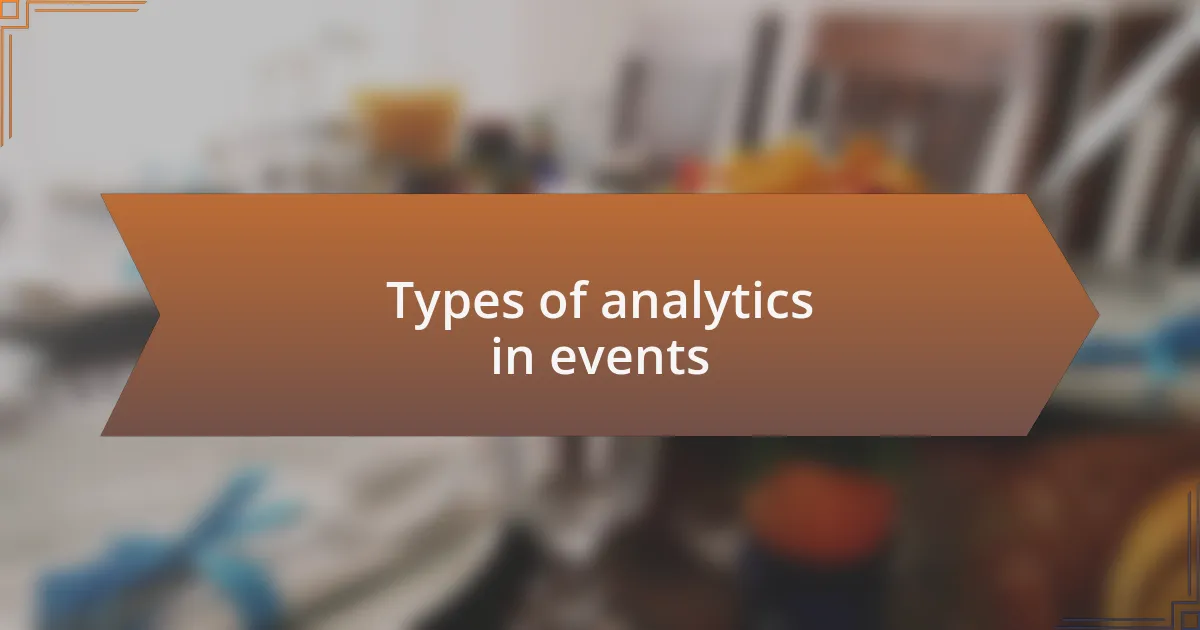
Types of analytics in events
When it comes to analytics in events, the types are as varied as the events themselves. One key type is behavioral analytics, which tracks how attendees interact during an event. I once ran an event where we utilized heat maps to see which areas were attracting crowds. It turned out that a simple networking lounge became a hub of valuable connections—something I never anticipated!
Another essential type is demographic analytics. I remember analyzing attendee profiles for a summit, which revealed a surprising spike in international participants. This insight led me to reconsider our approach to content, ensuring it resonated not just locally but across different cultures. Have you ever wondered how understanding your audience’s backgrounds could change the way you communicate with them?
Finally, sentiment analysis provides a glimpse into the emotional responses of attendees. After one particular event, I combed through social media mentions and feedback forms, uncovering mixed feelings about the event’s pacing. This kind of insight is crucial. It compels us to listen actively and adapt our future programs to genuinely address attendee sentiments—what could be more essential than that in crafting memorable experiences?

Tools for event analytics
When it comes to tools for event analytics, I’ve found that platforms like Google Analytics can be incredibly valuable. I once integrated it into our event registration process and discovered how many attendees visited our site before signing up. This information highlighted the importance of our marketing efforts, showing me which channels were effective and which needed a bit more attention. Have you ever wondered how such simple tracking can crystalize your marketing strategy?
Another tool that has served me well is Eventbrite’s reporting features. I remember analyzing post-event data from a conference that had multiple sessions. The insights into which sessions had the highest attendance helped us to identify what topics truly resonated with our audience. It’s fascinating how data can guide future programming decisions and ensure we are delivering content that our attendees crave.
Lastly, I can’t overlook the power of social media analytics tools, like Hootsuite Insights. During one event, we used it to monitor real-time engagement and sentiment across various platforms. I was amazed at how quickly we could respond to attendee feedback, which improved their overall experience on the spot. Isn’t it empowering to leverage analytics to not only observe but also to engage directly with your audience?
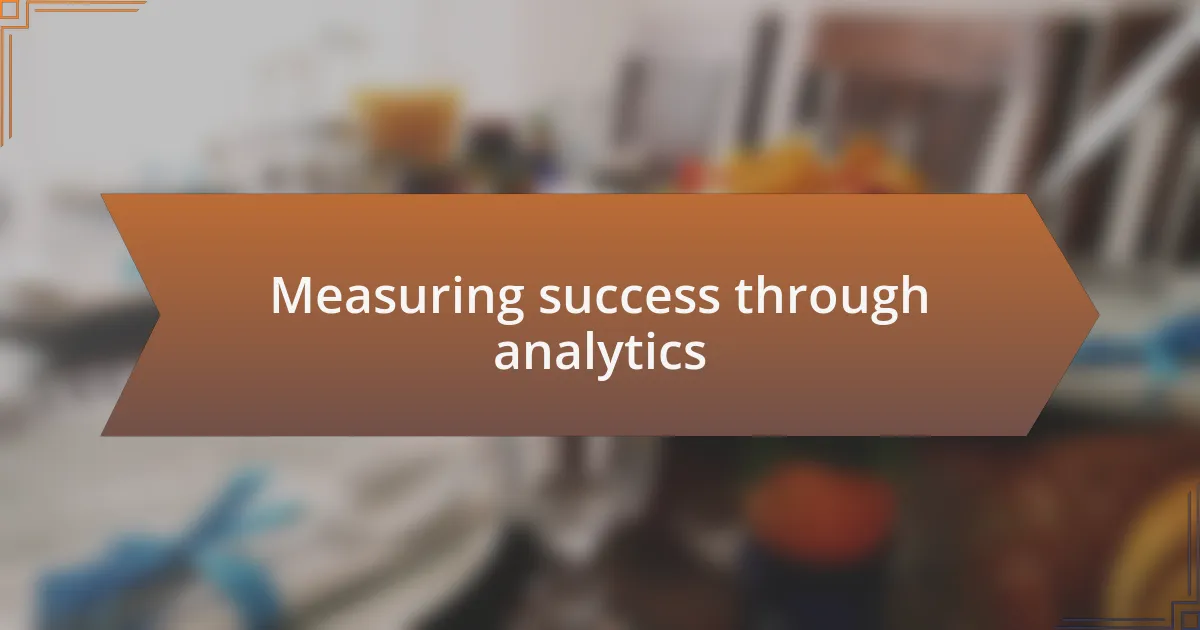
Measuring success through analytics
Measuring success through analytics is more than just tracking numbers; it’s about storytelling through data. I vividly recall a time when I analyzed attendee engagement metrics from a festival. By focusing on the checkout flow, I noted that a significant drop-off occurred at a specific point in the ticket purchasing process. Isn’t it interesting how a minor hiccup can impact overall ticket sales? This prompted a swift redesign that not only boosted conversions but also enhanced the user experience.
A compelling aspect of success measurement lies in post-event surveys, which can uncover attendee satisfaction levels. I remember gathering feedback after a workshop, where I found striking insights about networking opportunities. Participants expressed a desire for more structured interactions. This feedback was eye-opening; it emphasized how analytics can direct us toward the finer aspects of event design that truly matter to our audience’s experience.
When I look at the overall impact of analytics, I often think about it as a roadmap for future events. After examining the data from an annual gala, I discovered trends in attendee behavior that influenced our planning for the next year. Did you know that even subtle shifts in programming can yield higher engagement? This strategic approach not only aligns with attendee interests but also positions the event for success, making each gathering better than the last.
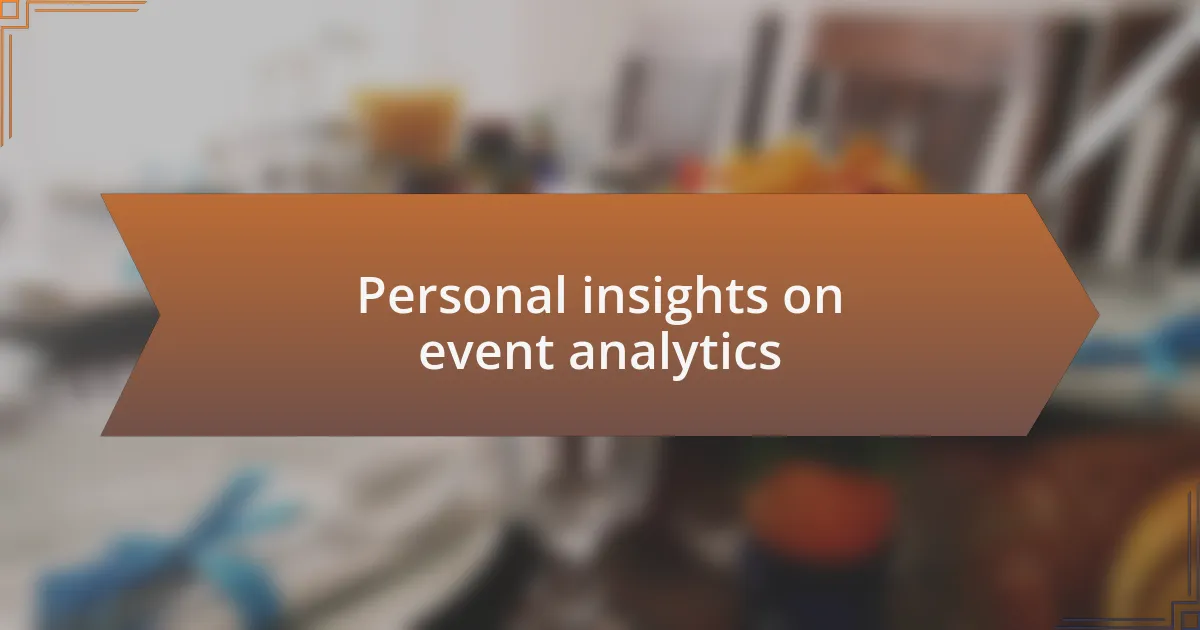
Personal insights on event analytics
Delving into event analytics has always felt like uncovering hidden treasures. I remember when we dove deep into social media interactions from a recent conference. It was surprising to see how one particular speaker resonated with attendees, sparking conversations long after the event ended. This insight made me wonder: could selecting speakers with similar engagement levels be a key to future success? The answer seems clear.
Another memorable experience involved tracking the most attended sessions at a workshop. It was exhilarating to see certain topics generate buzz, while others fell flat. That taught me the importance of aligning content with audience interests. Isn’t it fascinating how analytics can guide us to curate programs that truly excite and engage participants?
On a personal note, I often find myself reflecting on how analytics not only inform our decisions but also shape our narratives as event professionals. I recall a moment during a debrief when we dissected the data from attendee interactions and found a significant increase in virtual engagement. This made me ponder the evolving nature of events and how we can adapt to create even more compelling experiences. Engaging with data in such meaningful ways transforms our approach to event management and truly amplifies our impact.
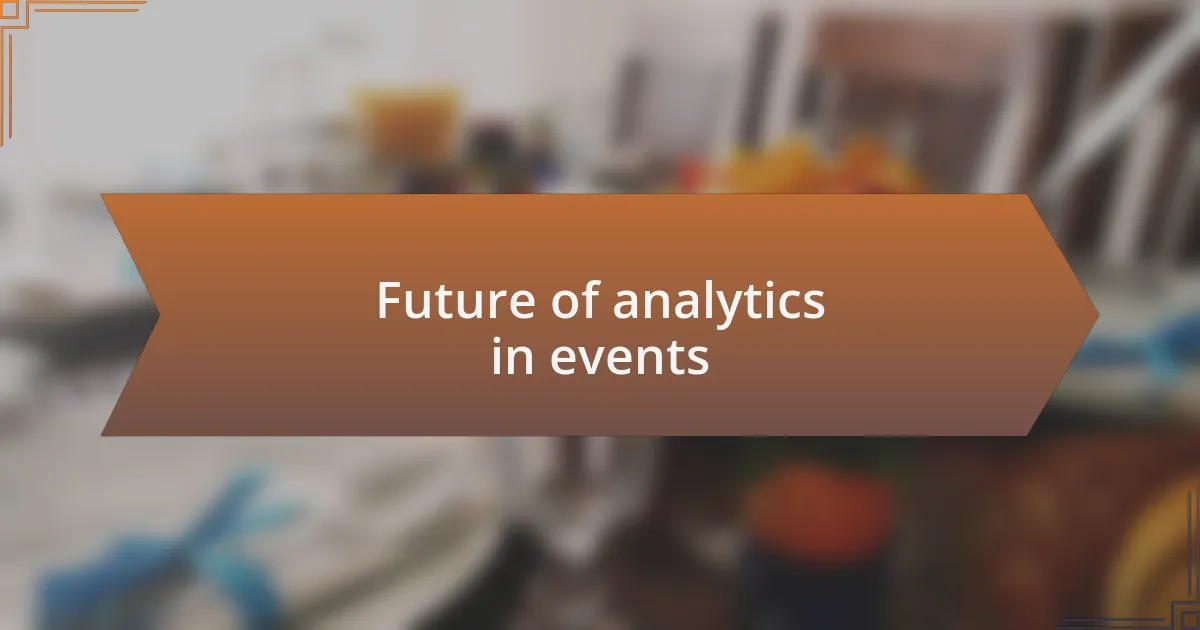
Future of analytics in events
As I look toward the future of analytics in events, I can’t help but feel a sense of excitement about the possibilities. Imagine harnessing AI and machine learning to predict attendee behaviors with startling accuracy. I’ve often wondered how empowering it would be to anticipate the needs of our participants even before they step through the door. Isn’t that the kind of forward-thinking approach that could redefine engagement?
Moreover, I envision a world where real-time data feeds could dynamically shape our events as they unfold. During one of my past events, we adjusted our session topics based on immediate attendee feedback—a game-changer for participant satisfaction. The idea of leveraging ongoing analytics to create a truly responsive environment gives me goosebumps. What if we could tailor experiences on the fly, ensuring that every moment is precisely what the audience craves?
Lastly, the integration of wearable technology into event analytics has the potential to revolutionize how we collect and analyze data. I recall a conversation with a fellow organizer about the exciting possibilities that lie in tracking attendee movements and interactions through simple wristbands. This could shed light on crowd dynamics and preferences in ways we can only dream of today. How thrilling would it be to harness such data to dream up even more inclusive and engaging events? The path forward is paved with untapped opportunities waiting for us to explore.